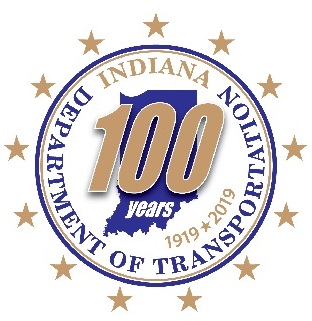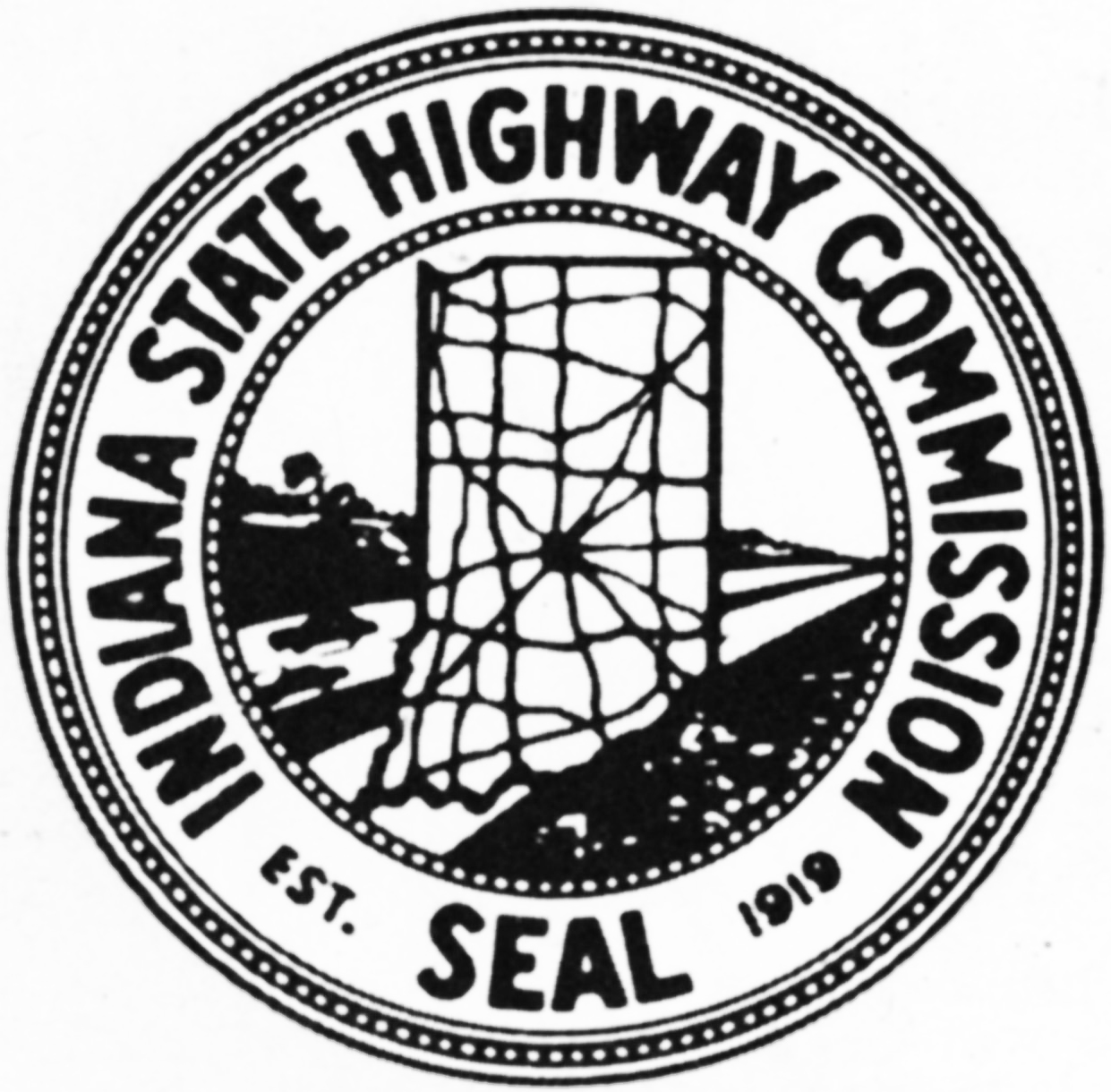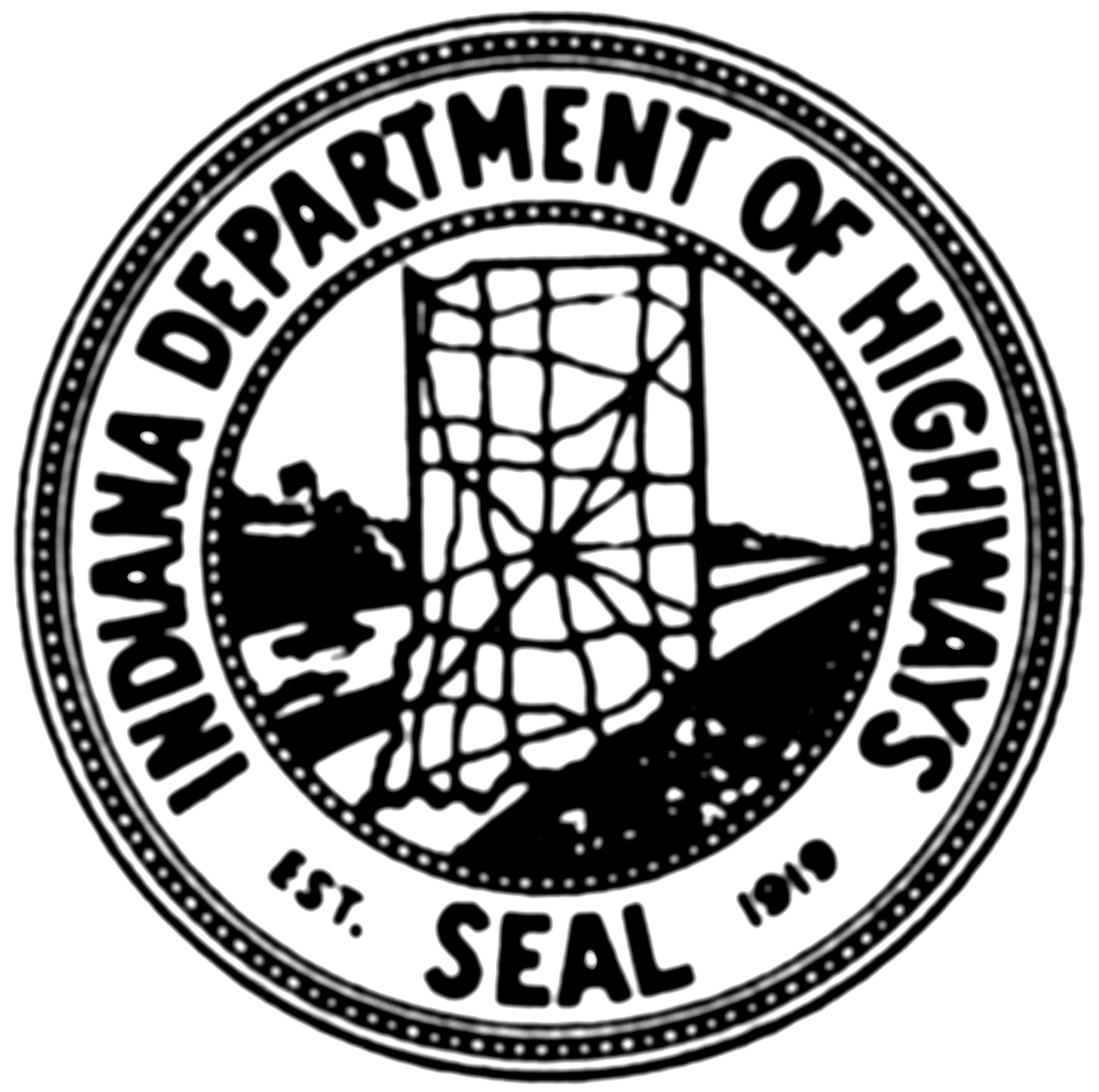INDOT marked its 100th anniversary in July 2019, an anniversary milestone that celebrated the 1919 awarding of the first state highway contracts by the Indiana State Highway Commission, the predecessor to the Indiana Department of Transportation.
Driving on Indiana’s roads and highways today, it’s hard to imagine a landscape in which days were often required to travel between Hoosier towns. For decades before and after Indiana became a state in 1816, dirt paths cut through the forest were the only routes easily followed and travel was dangerous and slow. Often these paths were old Native American or American Bison trails used for hundreds of years as the buffalo migrated and native hunters followed.
The first long-distance roads in Indiana developed along these established routes and trails, which helped to facilitate American settlement. Many of these trails became major overland routes, and helped shape the history of Indiana.
Railroads dominated interstate travel by the second half of the 19th Century, but in the 1880s, the growing popularity of a new mode of transportation, the bicycle, was the first sign of change. The speed and individual mobility afforded by the bicycle created a nationwide craze for the next important mode of transportation.
Outside the cities, the nation's bad roads made bicycling a laborious, dangerous process. As one contemporary slogan put it, the roads were, "Wholly unclassable, almost impassable, scarcely jackassable!" Bicycle groups worked at the federal, state, and local level to secure road improvement legislation.

In response to the national need for road improvement, the federal government in 1883 created a new Office of Road Inquiry (ORI), the first predecessor to today’s Federal Highway Administration.
By 1914, the growth in automobile travel had increased pressure on the federal government to provide funds for road building outside of federal reserves. In July 1916, President Woodrow Wilson signed the Federal Highway Act into law. The act authorized states to create highway commissions to oversee road improvements and established the modern federal-state road-building partnership.

Indiana State Highway Commission
The Federal Highway Act of 1917 authorized the states to create a new state highway commission. The Indiana General Assembly took the first step toward establishing a state highway commission in March 1917; however, the constitutionality of that act was challenged. By the time the 1917 Highway Act was ruled constitutional by the Indiana Supreme Court in January 1919, the State Legislature had repealed the original 1917 Act and replaced it with another that became law on March 10, 1919. The creation and operation of the present state highway system began with the Indiana State Highway Commission, which was created by the 1919 Act.
Indiana’s First State Highway Projects
The first letting of the Indiana State Highway Commission for construction of state highways was held on July 15, 1919, at which time bids were received for 13 projects. In the afternoon session, the commission awarded five of these Federal Act projects:
- F.A. No. 2 ‒ St. Joseph County, Niles Road 4.68 miles, $192,359.20, awarded to the White Construction Co. Bituminous concrete.
- F.A. No 5 ‒ Wayne County, National Road 1.50 miles, $37,650.55, awarded to C.M. Kirkpatrick. Concrete.
- F.A. No. 7 ‒ Marion County, National Pike W. 6.11 miles, $179,127.90, awarded to George T. Miller. Concrete.
- F.A. No. 3 ‒ Marion County, Jackson Highway S. 7.30 miles, $283,329.70, awarded to Marion Construction Co. Asphaltic Concrete.
- F.A. No. 12a ‒ Jackson County, Seymour E. 2.46 miles, $68,546.00, awarded to Lawrence Jenkins. Concrete.

Indiana Department of Highways
The Indiana State Highway Commission served Hoosiers well until 1981, when it became the Indiana Department of Highways. The Indiana Department of Highways also included the Office of Traffic Safety, the Toll Road Commission, and the Toll Bridge Commission.
Indiana Department of Transportation
In July 1989, the Indiana Department of Highways was combined with the Transportation Planning Office to become the Indiana Department of Transportation.
INDOT is responsible for building and maintaining interstate highways, U.S. routes, and state roads in Indiana. The agency administers federal highway funds provided to cities, towns and counties, and supports and provides financial assistance to public transit systems, freight and passenger rail and port facilities. INDOT also encourages and assists in the development of airports, landing fields, and other aviation navigation facilities.
| Indiana Then & Now | 1919 | 2019 |
| Population | 2.9 million | 6.6 million |
| Median household income | $2,933 | $46,242 |
| Number of automobile registrations | 227,255 | 5.6 million |
| Average price of a new car | $295 | $37,577 |
| Total miles of roads | 73,347 | 97,553 |
| Centerline miles of state-managed roads | 4,100 | 11,206 |
| Centerline miles of paved state-managed roads | 800 | 11,206 |
| Annual state highway investment | $400,691 | $1.5 billion |
Historic Highway Facts
- Construction of the National Road (U.S. 40) through Indiana began in 1829.
- Construction of the Michigan road (U.S.421) began in 1830.
- Legislation encouraging private companies to build macadamized or gravel roads in Indiana was passed in 1852.
- Indiana counties were authorized to construct roads with taxes on roadside property beginning in 1877.
- Construction of the Lincoln Highway (U.S. 30) began in 1913.
- The first interstate built in Indiana was the first section of State Road 420, which later became I-80/I-94 in northern Indiana, opening in 1952.
- The Indiana Toll Road was established in 1951 and constructed between 1954 and 1956.
- I-74 was the first interstate to cross Indiana. The first section opened in 1960 and the final section opened in 1967.
- Construction of I-465, which circles Marion County in central Indiana, started in 1959. The first section opened in 1961; the final section was completed in 1970.
- The final sections of I-65 and I-70 through downtown Indianapolis were completed in 1976.
